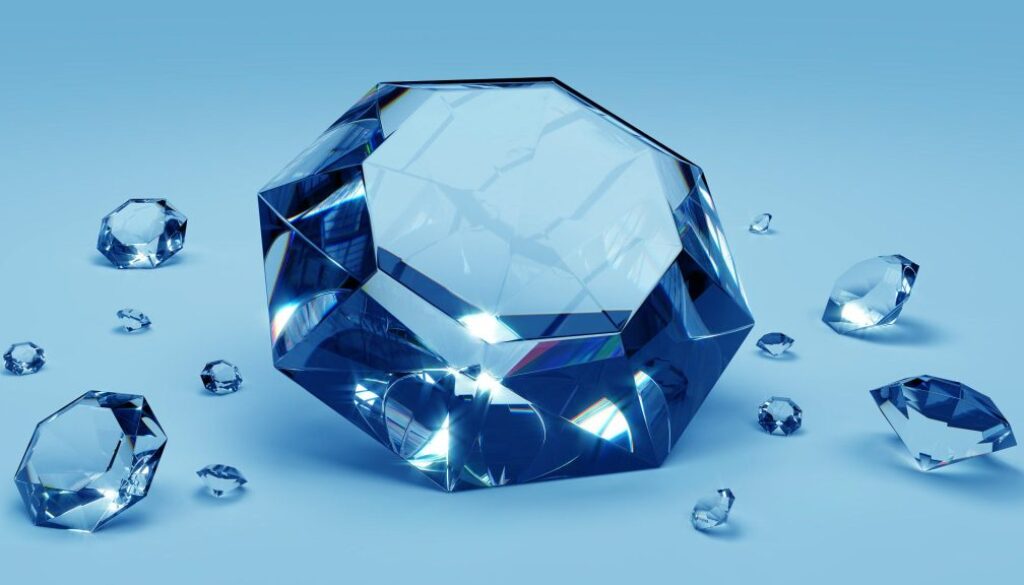In recent years, lab diamonds have gained immense popularity, offering a sustainable and ethical alternative to traditional mined diamonds. As more consumers seek eco-friendly and socially responsible options, lab diamonds are becoming a preferred choice. This article will explore the growing demand for lab diamonds, their benefits, and why they are transforming the jewelry industry.
Table of Contents
What Are Lab Diamonds?
Lab diamonds, also known as man-made diamonds or synthetic diamonds, are diamonds created in a laboratory setting. These diamonds are chemically, physically, and optically identical to natural diamonds, but they are produced in a controlled environment. Lab diamonds are formed using two primary methods: High Pressure High Temperature (HPHT) and Chemical Vapor Deposition (CVD) diamante laboratorio. Both techniques replicate the natural diamond formation process, producing diamonds with the same quality and brilliance as mined diamonds.
One of the main advantages of lab diamonds is their ability to be created without the environmental impact associated with mining. Traditional diamond mining can cause significant damage to ecosystems, while lab diamonds provide a more sustainable option for consumers seeking to reduce their carbon footprint. With lab diamonds, buyers can enjoy the beauty and luxury of diamonds without the ethical concerns often associated with their natural counterparts.
Why Are Lab Diamonds Becoming More Popular?
The increasing popularity of lab diamonds can be attributed to several factors, including their affordability, sustainability, and ethical considerations. Unlike natural diamonds, which can be expensive due to the rarity of finding high-quality stones, lab diamonds offer a more affordable option without compromising on quality. Lab diamonds are typically 20% to 40% less expensive than their mined counterparts, making them an attractive choice for consumers looking to invest in a diamond without breaking the bank.
Another key factor driving the rise of lab diamonds is the growing awareness of the environmental and social issues surrounding traditional diamond mining. Many consumers are now prioritizing sustainability and ethical sourcing when making purchasing decisions. Lab diamonds offer a transparent and ethical solution, as they are created in a controlled environment with minimal impact on the planet. Additionally, lab diamonds are free from the concerns of “blood diamonds,” which are mined in war zones and sold to fund conflict.
The Quality of Lab Diamonds
Lab diamonds are virtually indistinguishable from natural diamonds to the naked eye. They have the same brilliance, sparkle, and durability as mined diamonds, making them an excellent choice for engagement rings, necklaces, and other fine jewelry. The grading of lab diamonds is based on the same criteria as natural diamonds, known as the 4 Cs: cut, color, clarity, and carat weight.
Lab diamonds are available in a wide range of sizes and shapes, from classic round diamonds to more unique cuts like oval, princess, and emerald. Their clarity and color can vary, allowing buyers to choose a stone that suits their preferences and budget. Because lab diamonds are created in a controlled environment, they can be produced to meet high-quality standards, and consumers can often find diamonds that are even rarer or higher in quality than those found in nature.
Lab Diamonds and Their Environmental Impact
One of the most significant advantages of lab diamonds is their minimal environmental impact. Traditional diamond mining requires the extraction of large amounts of earth, which can result in deforestation, habitat destruction, and water pollution. In contrast, lab diamonds are created using less energy and natural resources, making them a more environmentally friendly option.
Lab diamonds are produced with a focus on sustainability, and many manufacturers use renewable energy sources in the creation process. Additionally, because lab diamonds do not require the mining of precious natural resources, they help reduce the environmental damage caused by traditional mining practices. For consumers who are passionate about reducing their ecological footprint, lab diamonds present a compelling and responsible alternative.
The Ethical Benefits of Lab Diamonds
Ethics play a crucial role in the growing demand for lab diamonds. Traditional diamond mining has long been associated with human rights abuses, child labor, and exploitative working conditions in some regions of the world. Lab diamonds, however, are created in a controlled environment, ensuring that no harmful practices are involved in their production.
By choosing lab diamonds, consumers can feel confident that they are supporting a product that is free from the ethical concerns associated with mined diamonds. This is especially important for buyers who are concerned about the social impact of their purchases and want to make a positive difference. Lab diamonds provide a transparent and traceable option that ensures ethical sourcing from start to finish.
How Lab Diamonds Are Changing the Jewelry Market
The rise of lab diamonds is transforming the jewelry market, offering consumers a more affordable, sustainable, and ethical alternative to traditional mined diamonds. Many jewelers are now offering a wide range of lab diamond options, catering to the growing demand for these stones. As lab diamonds become more mainstream, they are expected to continue to gain market share, disrupting the traditional diamond industry.
Lab diamonds are also appealing to a younger, more socially conscious generation of consumers. Millennials and Gen Z are increasingly choosing lab diamonds over mined diamonds, driven by their desire for transparency, sustainability, and ethical practices. As these consumers become the dominant force in the market, the jewelry industry is likely to see continued growth in the lab diamond sector.
Conclusion
Lab diamonds represent a significant shift in the jewelry industry, offering a sustainable, affordable, and ethical alternative to traditional mined diamonds. With their identical appearance and comparable quality, lab diamonds are gaining popularity among consumers who prioritize environmental responsibility and social ethics. As more people choose lab diamonds, the industry will continue to evolve, making it clear that lab-grown diamonds are not just a passing trend but a revolutionary force in the world of fine jewelry.




